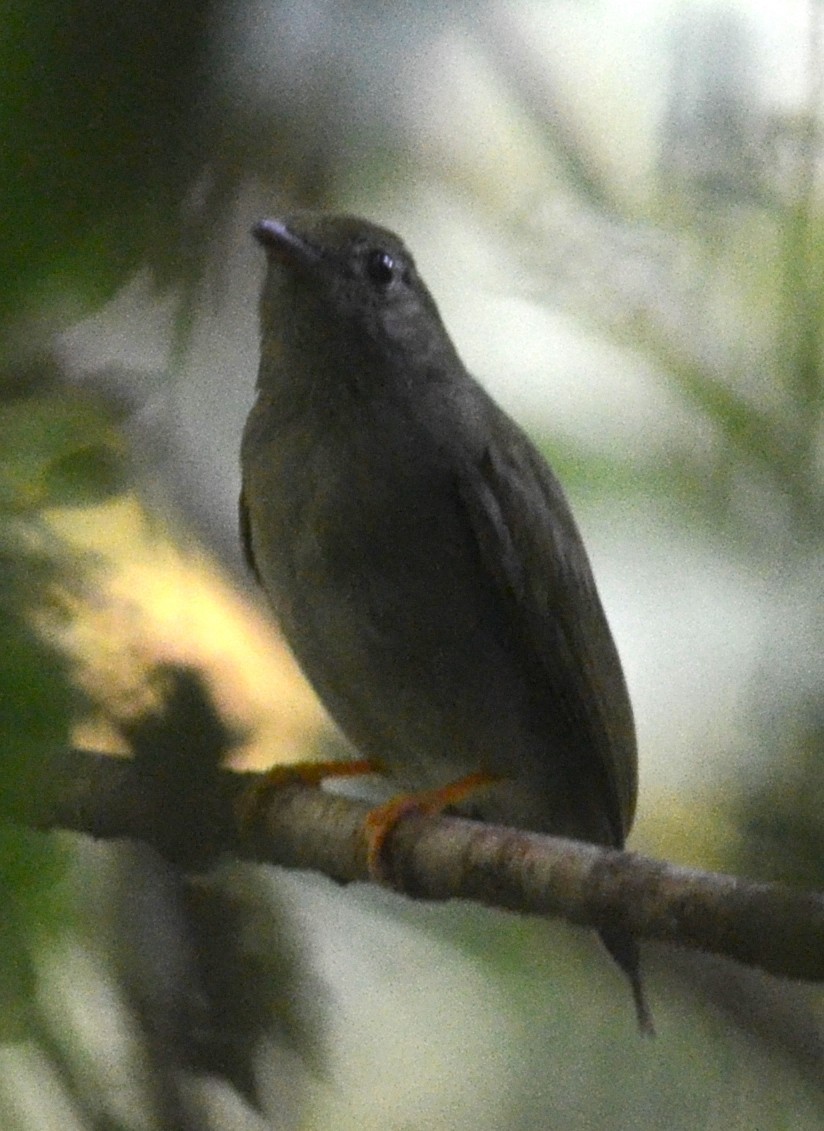Lance-tailed Manakin
A species of Cooperative-displaying Manakins Scientific name : Chiroxiphia lanceolata Genus : Cooperative-displaying Manakins
Lance-tailed Manakin, A species of Cooperative-displaying Manakins
Botanical name: Chiroxiphia lanceolata
Genus: Cooperative-displaying Manakins
Content
Description General Info
 Photo By Nikolaj Mølgaard Thomsen
Photo By Nikolaj Mølgaard Thomsen Description
Like other manakins, the lance-tailed manakin is a compact, brightly coloured forest bird, typically 13.5 cm long and weighing 17.5 g. Both sexes have bring orange legs and two central tail feathers elongated to form a spike. Females are olive-green, with slightly paler underparts. Most females are solid green, however, a small portion have tawny or red caps. Adult males are mostly black, with a red cap and sky-blue back. Young males are olive but show a red cap and the start of a blue back as they mature. Male lance-tailed manakins do not reach their full adult plumage until approximately 26 months after hatching. This species is similar to blue-backed manakin, Chiroxiphia pareola, which breeds further south and east, but the latter lacks the spiky tail, and the male has a somewhat darker blue back. 
Size
13 cm
Nest Placement
Tree
Feeding Habits
Lance-tailed Manakin primarily consumes fruits and insects, utilizing unique foraging methods adapted to its habitat. This bird exhibits a preference for these food items and may have specialized feeding times or techniques, which differ from other species.
Habitat
Lance-tailed Manakin are typically found in a variety of woodland habitats, ranging from dry to humid conditions. They favor regions with dense undergrowth, where they can thrive in both thick scrub and areas of second-growth woodlands amidst semi-open landscapes. The species inhabits elevations up to 1500 meters, and in some localities, it can be found at altitudes as high as 1700 meters.
Dite type
Frugivorous
General Info
Feeding Habits
Bird food type

Fruit
Species Status
This bird has a very wide range, is fairly common and is presumed to have a large total population. The population trend is thought to be stable and the International Union for Conservation of Nature has rated the bird's conservation status as being of "least concern". 

 Photo By Nikolaj Mølgaard Thomsen
Photo By Nikolaj Mølgaard Thomsen